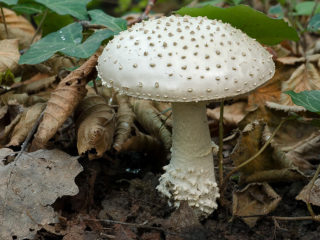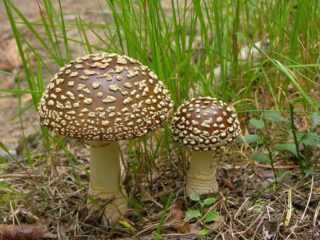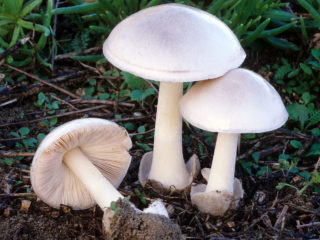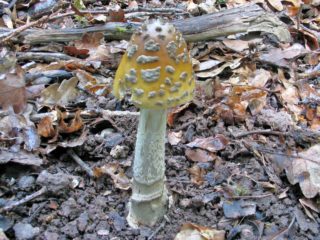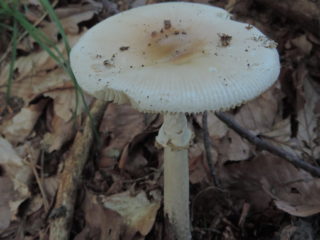Content
According to some external features, the scabby is a common representative of the Amanitov family. At the same time, he has several features that are not characteristic of most of his fellows. Of all the fly agarics, this species is the most "atypical".
Description of Amanita muscaria
The appearance of this mushroom, without a shadow of a doubt, allows it to be attributed to the Amanitovs. The remnants of the bedspread on the cap, characteristic of all fly agaric, are not characteristic of the rest of the kingdom. On the other hand, the color of the fruiting body is completely uncharacteristic for fly agarics, which causes certain difficulties in its identification.
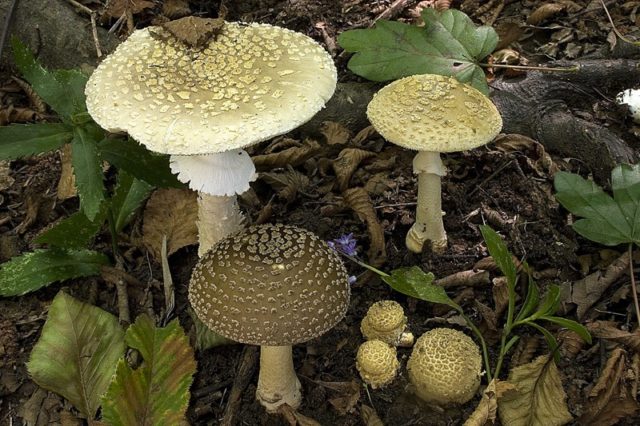
The appearance of the representatives of the Amanita muscaria at various stages of maturity
Description of the hat
Its diameter ranges from 4 to 9 cm. Unlike most fly agarics, the rough one is very fleshy. The colors can be in all shades of brown, dark yellow or olive.
At the beginning of its life, the mushroom cap is semicircular, over time it straightens out and can even bend inward. Its smooth edge will crack at the stage of flattening, exposing the pulp. The latter is white, acquiring a yellowish tint in air.
From above, the cap is covered with a skin of moderate thickness, on which there are many “flakes” characteristic of fly agaric, which are the remnants of the bedspread. The pulp has a pleasant mushroom aroma that spreads far enough.
The hymenophore is lamellar, of a simple structure, not adherent to the pedicle. May have thickening in the middle. The color of the hymenophore is white. In adult fruiting bodies, it changes over time to yellow. The spore powder is also white.
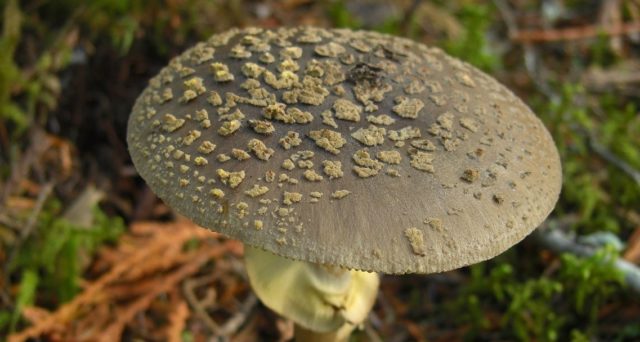
The remains of the bedspread on the old mushroom cap change color to dirty yellow
Leg description
The lower part of the fruiting body of the Amanita muscaria can reach 8 cm in length (average about 6 cm) with a diameter of 1-2 cm. The leg has a cylindrical shape, but may taper slightly upward. At an early age, it is dense, but over time, a cavity forms inside it.
The Volvo, located at the base of the leg, is practically invisible. Like all parts of the mushroom, it is gray-yellow in color. But the ring of the rough fly agaric appears well. It has a characteristic uneven edge, in addition, white flakes are not uncommon on it.
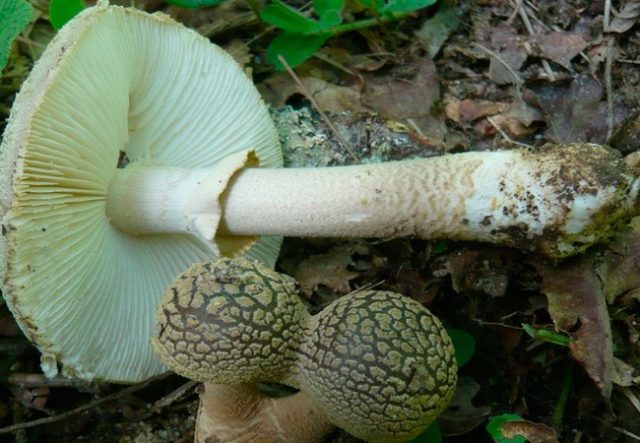
There is practically no volva on the leg of the rough fly agaric, but the ring is clearly visible
Where and how it grows
The distribution area of Amanita muscaria is extensive. This species is found almost everywhere in the temperate climate of the Northern Hemisphere. It can be found from the western coast of Europe (except for the Scandinavian Peninsula) to Japan, as well as throughout the United States and Canada, located north of the subtropics. It is also widespread in Africa: in Algeria and Morocco. The species does not occur in the Southern Hemisphere.
Prefers mixed and deciduous forests, since it forms mycorrhiza with Beech or Birch. Most often it can be found under an oak or hornbeam. Fruiting bodies are located in small groups. Of all substrates, it prefers ordinary loamy soil.It rarely grows on sandy ones. Fruiting occurs in the second half of summer and can last from July to October.
Is the mushroom edible or not
Refers to inedible mushrooms. However, there is no consensus on this issue. At the end of the last century, many authoritative mycologists spoke out both for the edibility of the rough amanita and against it. It is known for sure that it is not classified as a poisonous mushroom.
Signs of poisoning, first aid
You can get poisoned with this species only if you eat it in very large quantities. The concentration of substances typical for fly agaric (for example, muscarine and muscimol) in it is too low.
If the poisoning has occurred, the symptoms include:
- auditory and visual hallucinations;
- increased physical activity;
- nausea, vomiting, salivation;
- convulsions;
- loss of consciousness.
Usually, the signs appear about 0.5-5 hours after eating the mushroom agaric for food.
First aid is standard for any poisoning: gastric lavage with all possible means, taking laxatives (phenolphthalein, castor oil) and enterosorbents (activated carbon, Smecta, etc.)
Doubles and their differences
Due to its characteristic appearance, the rough fly agaric practically does not have twins similar to it. The uncharacteristic combination of shape, color and smell of this representative of the mushroom kingdom allows you to immediately determine its belonging. The only species that can be visually confused with it is the Sicilian fly agaric.
It has approximately the same size and shape, but differs from the rough appearance by the presence of a volva and the yellow color of the flakes on the cap, which does not change over time. In addition, the smell inherent in the rough fly agaric is absent in the Sicilian one.
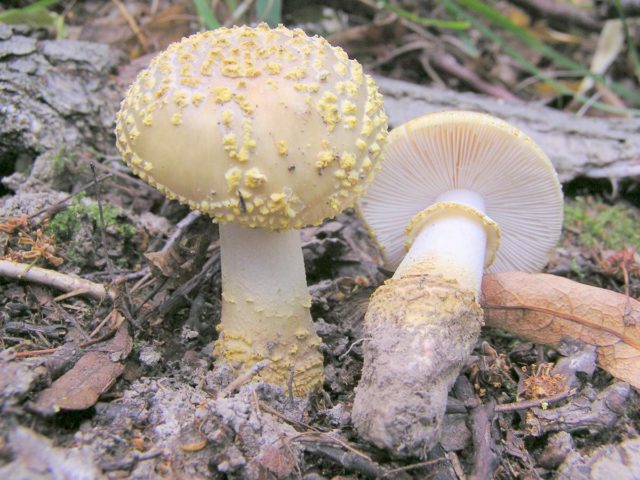
The yellow color of the flakes and the Volvo are the characteristic differences of the double
It should be noted that only young specimens can be confused. With age, "Sicilians" grow up to 15 cm in diameter and 20 cm in height. Their stem, in contrast to the rough ones, has a noticeable gradient color. This variety also belongs to inedible mushrooms.
Conclusion
Amanita muscaria - one of the representatives of the Amanitov family. Despite the fact that the mushroom has its characteristic appearance, this species is not poisonous. Amanita muscaria is widespread in the temperate climate of the Northern Hemisphere.

